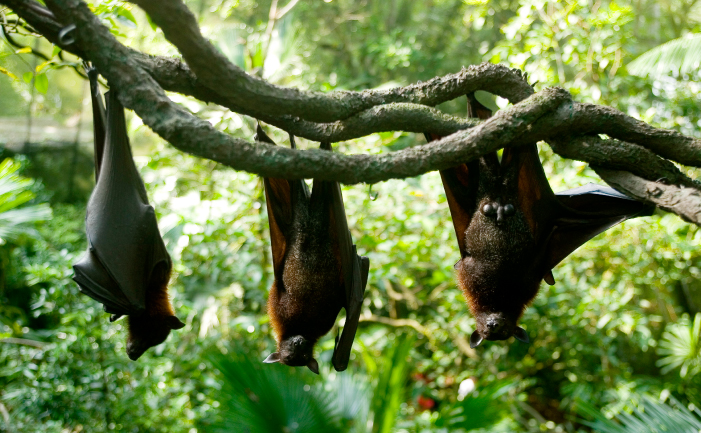Grey Headed Flying Fox
The bat is a fascinating creature that has appeared in the belief systems, art, literature, film and even recipes of people for centuries. You might not realise it, but bats will probably have visited your backyard at some stage this year. There are 966 species of bat in the world, and 90 of those are found in Australia. They come in all sizes, from a tiny Malaysian bat the size of a bumble-bee, to a huge bat from New Guinea with a wing span of almost 2 metres (6′). The fossil record shows that bats evolved as flying animals at least 60 million years ago. They are the only mammals that can fly, and the bone structure of their wings resembles that of an elongated human arm and hand. Bats are divided into two major groups, the megabats and the microbats.
Megabats
Members of the megabat group eat mostly fruit. There are 12 species in Australia including the Flying-fox, which can be seen by day hanging from branches in camps or communal roosts. At night some species fly up to 30 kilometres to their feeding areas, and some migrate as far as 1000 kilometres each year as they follow the flowering of eucalypts. There are also smaller fruit bats, for example tube-nosed bats and blossom bats. Fruit bats have sharp eyesight, and their sense of smell is so acute they can detect a tiny piece of banana from 100 metres (330′) away.
Microbats
These bats eat mostly insects, they have small eyes and they rely mainly on sound (echolocation) for navigation. They are small in size and weigh from about 3-100 grams.
Further information
Australian bats have the potential to carry the deadly lyssavirus that can be transmitted to people through blood or saliva. Anyone handling bats should be vaccinated. If you’re bitten or scratched wash the wound immediately with soap and water and seek medical advice.
If you want to know more about these amazing creatures visit Bats, a major exhibition on now at the Australian Museum and continuing until 12 February 2000.
Admission: $20 family; $10 adult; $5 child; $6 concession; under 5’s, seniors & TAMS members free.
Australian Museum
6 College Street
Sydney, NSW, 2000
Phone: (02) 9320 6000
Website: www.austmus.gov.au
Ku-ring-gai Bat Conservation Society
Denise Ford
Phone: (02) 9949 1278
www.sydneybats.org.au
Australian Bat Society
Peggy Eby
PO Box 3229
Tamarama, NSW, 2026



